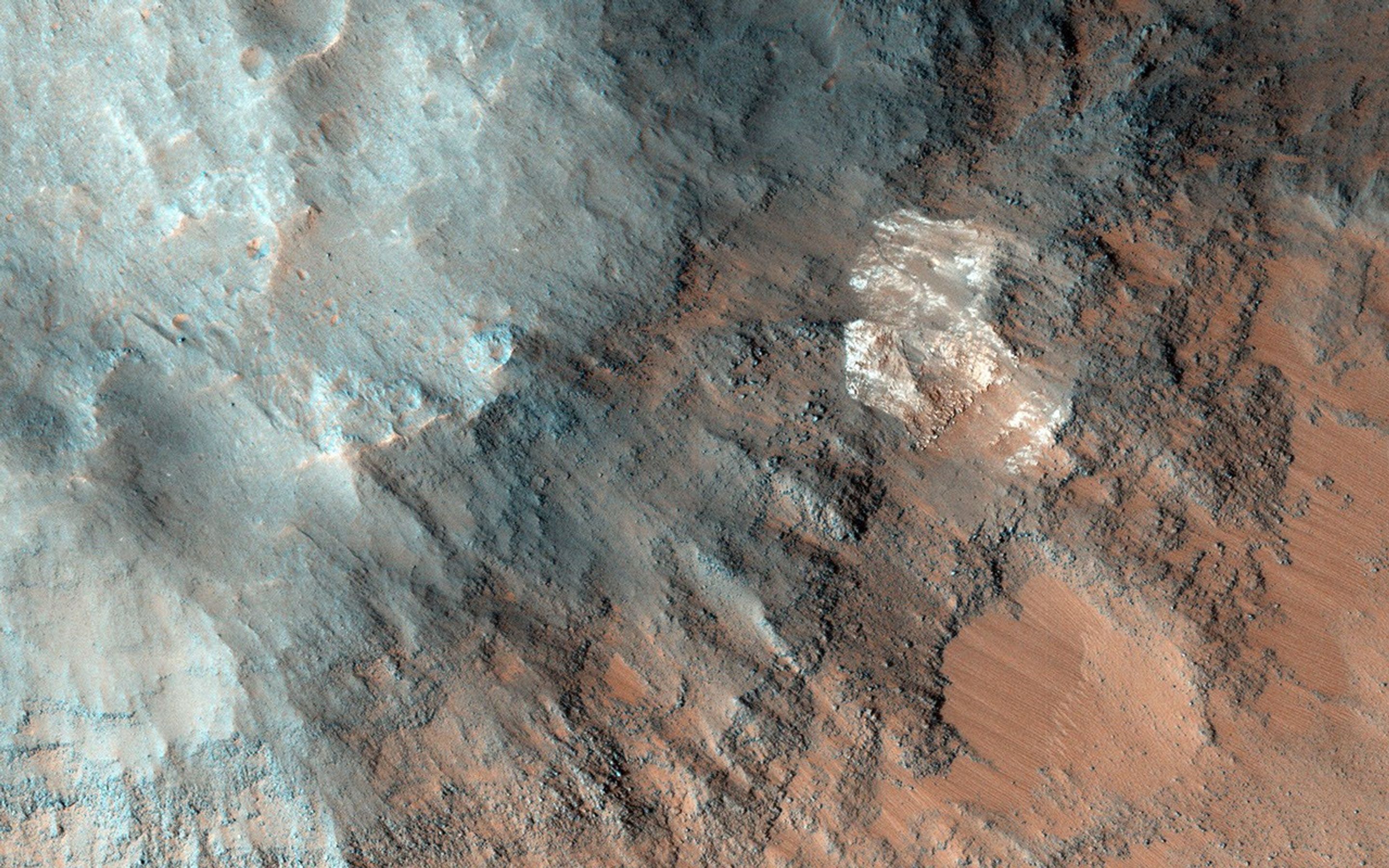Description

Map Projected Browse Image
Click on the image for larger version
What do we mean when we describe a surface as having "high thermal inertia"? The term refers to the ability of a material to conduct and store heat, and in planetary science, its measure of the subsurface's ability to store heat during the day and reradiate it during the night.
What causes thermal inertia? It depends on the composition of the terrain that we're studying. Here in Coprates Chasma, the site of this observation, we find indications of such high thermal inertia, so an image at high resolution may help us determine the composition and structure to give us an answer.
Coprates Chasma is located in the huge canyon system, Vallis Marineris.
The University of Arizona, Tucson, operates HiRISE, which was built by Ball Aerospace & Technologies Corp., Boulder, Colo. NASA's Jet Propulsion Laboratory, a division of the California Institute of Technology in Pasadena, manages the Mars Reconnaissance Orbiter Project for NASA's Science Mission Directorate, Washington.
































